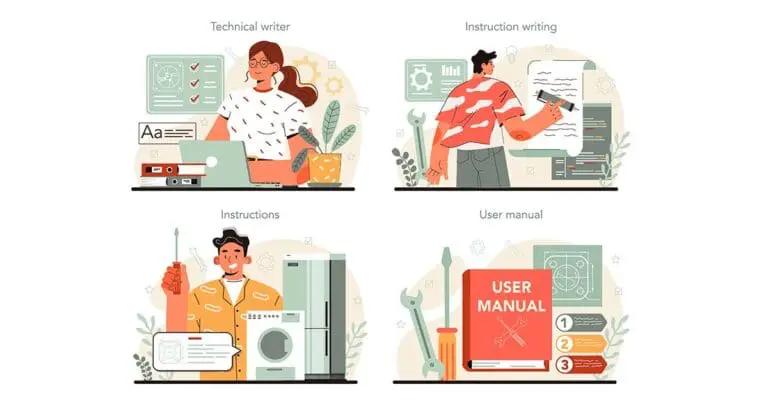How to Leverage Gamification in Recruitment

In the digital age, the recruitment process has evolved dramatically, with new technologies reshaping how companies attract and evaluate talent.
One of the most innovative approaches to emerge is gamification in recruitment.
By incorporating game elements into the hiring process, companies can create a more engaging, efficient, and effective experience for both recruiters and candidates.
The increasing adoption of gamification in recruiting reflects its growing importance as a tool for enhancing candidate engagement, providing valuable insights, and improving overall recruitment outcomes.
What is gamification in recruitment?
Gamification in recruitment refers to the use of game-like elements—such as quizzes, simulations, competitions, and leaderboards—to make the hiring process more engaging and to assess candidates in a more dynamic way.
These gamification techniques leverage game mechanics to tap into human motivation, making the candidate experience more interactive and enjoyable.
For instance, gamified assessments can evaluate problem-solving abilities and other soft skills in real-time, providing a deeper understanding of a candidate’s true potential beyond traditional methods.
Examples of gamification in recruitment
Examples of gamification in recruitment include Google’s coding challenges in tech recruitment, Jeu Facture Academy simulations in retail recruitment, and Deliotte leaderboards and competitions for internal referrals.
Google’s coding challenges in tech recruitment
A prominent example of using coding challenges in recruitment is Google’s Code Jam competition. Google utilizes this global coding contest not only to identify top programmers but also to recruit them.
Participants engage in multiple rounds of algorithmic coding puzzles, with winners often being offered positions at Google.
This approach effectively measures both technical skills and problem-solving skills in a high-pressure, real-time environment, making it a perfect fit for selecting the most qualified candidates for their engineering roles.
Jeu Facteur Academy simulations in retail recruitment
The Jeu Facteur Academy by Formapost, the French postal service, is an excellent example of using simulations of real-world scenarios in recruitment.
This virtual game allowed candidates to experience a day in the life of a postal worker, dealing with tasks like route planning and customer service skills.
This immersive experience provided a realistic preview of the job, helping both the employer and the prospective employee to assess job fit before making any commitments
Deloitte leaderboards and competitions for internal referrals
Deloitte implemented a gamified system through its Badgeville platform, which uses leaderboards and competitions to encourage employee participation in internal training and referral programs.
This approach not only fostered healthy competition but also enhanced employee engagement and promoted Deloitte’s employer branding as an innovative and dynamic workplace.
This strategy has proven effective in attracting potential candidates who are motivated by a fun environment.
5 steps to implement gamification in recruitment
Steps to implement gamification in recruitment means hiring managers must define objectives, choose the right tools, design engaging challenges, pilot and optimize, and communicate clearly.
Define objectives
To successfully implement a gamified recruitment process, start by aligning your gamification strategy with your recruitment goals.
Whether your aim is to improve candidate engagement, enhance the accuracy of candidate assessment, or streamline the selection process, clear objectives are key to ensuring that the gamified elements you choose effectively support your overall strategy.
Choose the right tools
Selecting the appropriate platforms and technologies is crucial to the success of your gamification process.
Look for gamification tools that offer customizable features to fit your specific needs, such as gamified assessment platforms or interactive games that can assess both technical skills and soft skills.
Design engaging challenges
When designing interactive challenges, focus on creating relevant, fair, and challenging assessments that truly reflect the skills needed for the job.
These challenges should provide an engaging experience for candidates, while also allowing recruiters to gain deeper insights into each candidate’s capabilities.
Pilot and optimize
Before rolling out your gamified recruitment strategy on a larger scale, start with a pilot program.
Gather feedback from both candidates and recruiters, and make any necessary adjustments to optimize the candidate experience and ensure the process is delivering accurate and data-driven insights.
Communicate clearly
It’s important to ensure that candidates understand the purpose and benefits of gamification in recruitment.
Clear communication will help manage expectations and demonstrate how gamified experiences can lead to more informed hiring decisions.
Benefits of gamification in recruitment
Benefits of gamification in recruitment include enhanced candidate engagement, improved candidate assessment, data-driven insights, and attracting top talent.
Enhanced candidate engagement
Gamification can significantly boost candidate engagement by making the hiring experience more interactive and enjoyable.
By incorporating elements of fun and competition, candidates are more likely to stay engaged throughout the process, leading to a more positive experience for candidates.
Improved candidate assessment
Using gamified assessments allows recruiters to evaluate a candidate’s problem-solving abilities, cognitive ability, and personality traits in a more dynamic way.
This approach offers a more accurate assessment of a candidate’s skills and fit for the role compared to traditional assessment methods.
Data-driven insights
One of the key advantages of gamification in recruitment is its ability to provide measurable data on candidates’ performance.
These data-driven insights enable recruiters to make more informed decisions about which candidates are best suited for the job.
Attracting top talent
Incorporating game mechanics into your recruitment process can help your company stand out and attract tech-savvy, innovative candidates.
This approach not only appeals to a broader talent pool but also enhances your company’s reputation as an innovative and forward-thinking employer.
Challenges and considerations of gamification in recruiting
Challenges and considerations of gamification in recruiting include, fairness, accessibility, and skepticism, legal and ethical considerations, and balancing fun with function.
Fairness, accessibility, and skepticism
Despite its many benefits, gamification in recruiting can present certain challenges. It’s important to address concerns around fairness, accessibility, and the potential for candidate skepticism.
Ensuring that all candidates have an equal opportunity to succeed is crucial for maintaining the integrity of your gamified recruitment process.
Legal and ethical considerations
When implementing gamification in hiring, it’s essential to ensure compliance with employment laws and ethical recruitment practices.
This includes safeguarding against biases that may arise from using gamification elements and ensuring that the selection process remains objective.
Balancing fun with function
While game design elements can make the recruitment process more engaging, it’s important to maintain a balance between fun and function.
The primary goal should always be to accurately assess candidates’ qualifications, ensuring that gamification elements enhance rather than detract from the recruitment strategy.
Leveraging gamification in recruiting
Incorporating gamification in recruitment offers a multitude of benefits, from enhancing candidate engagement to providing valuable insights that lead to more informed hiring decisions.
As the recruitment landscape continues to evolve, gamification in recruitment seems poised to play an increasingly important role.
By exploring and implementing gamification principles in your hiring strategy, your company can not only attract top talent but also create a more efficient and interactive recruitment process.
Looking to hire top-tier Tech, Digital Marketing, or Creative Talent? We can help.
Every year, Mondo helps to fill over 2,000 open positions nationwide.
More Reading…
- How to Create a Talent Pipeline in a Competitive Market
- How AI is Transforming the Healthcare Industry and What the Future Holds
- The Growing Importance of Embracing Neurodiversity in the Workplace
- 8 Traits of “Good Bosses” People Want to Work For
- Preparing for Gen Alpha: the Next Generation of Workers
- Why Is Diversity in Leadership Important? Top Benefits & Strategies
- CrowdStrike Outage Highlights Importance of Incident Response Planning
- How to Attract Top Talent with a Strong Employer Brand
- How to Measure and Improve Remote Employee Productivity
- How To Use Predictive Analytics to Forecast Hiring Needs



